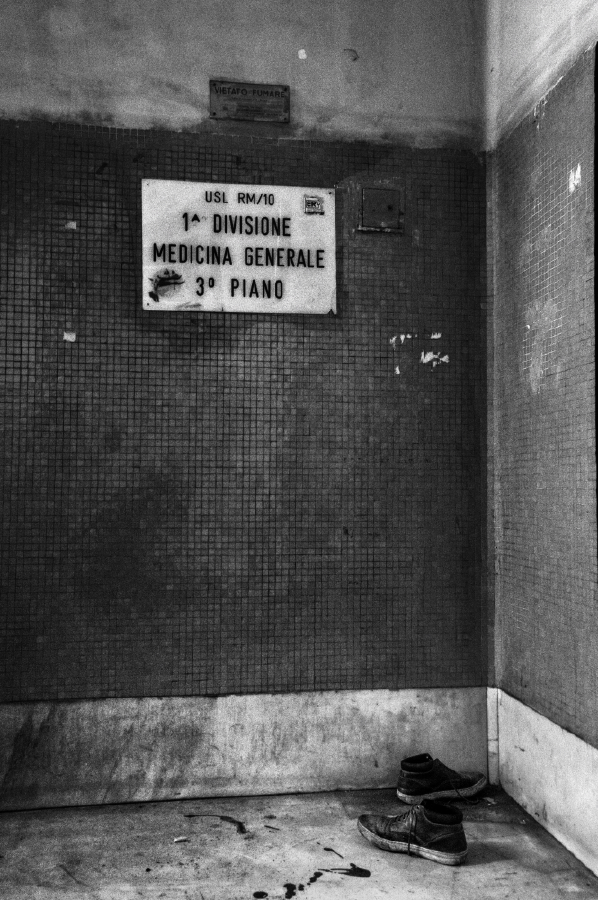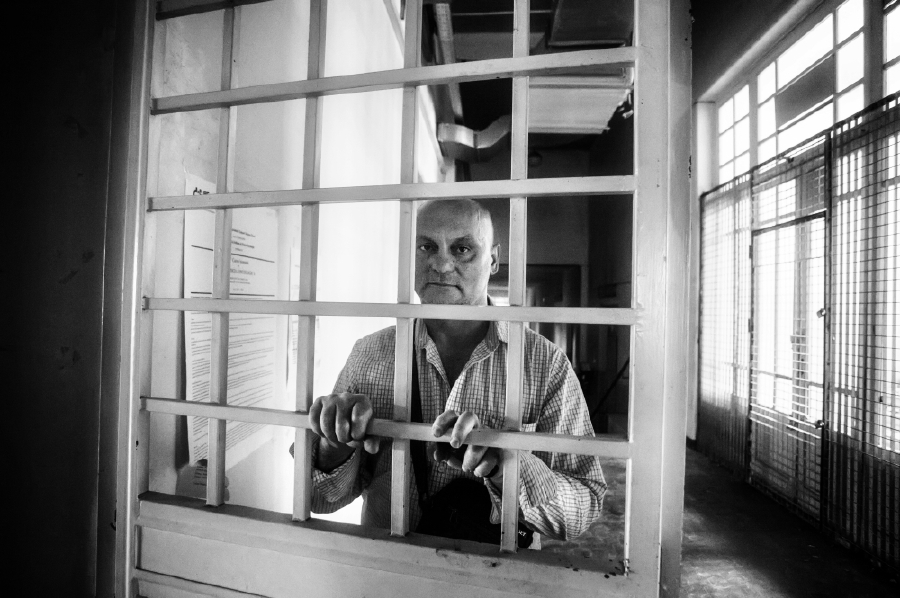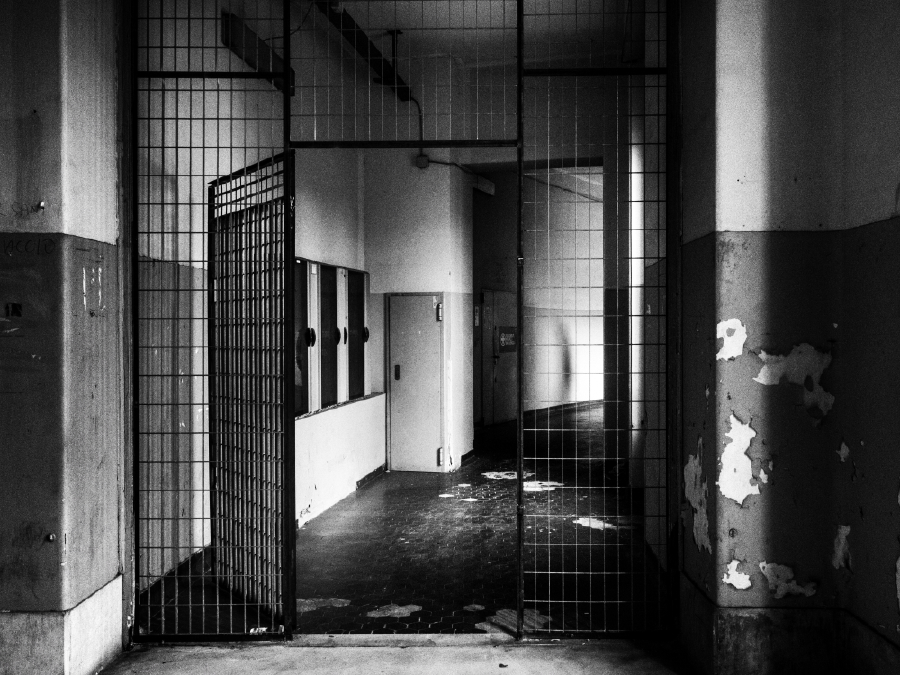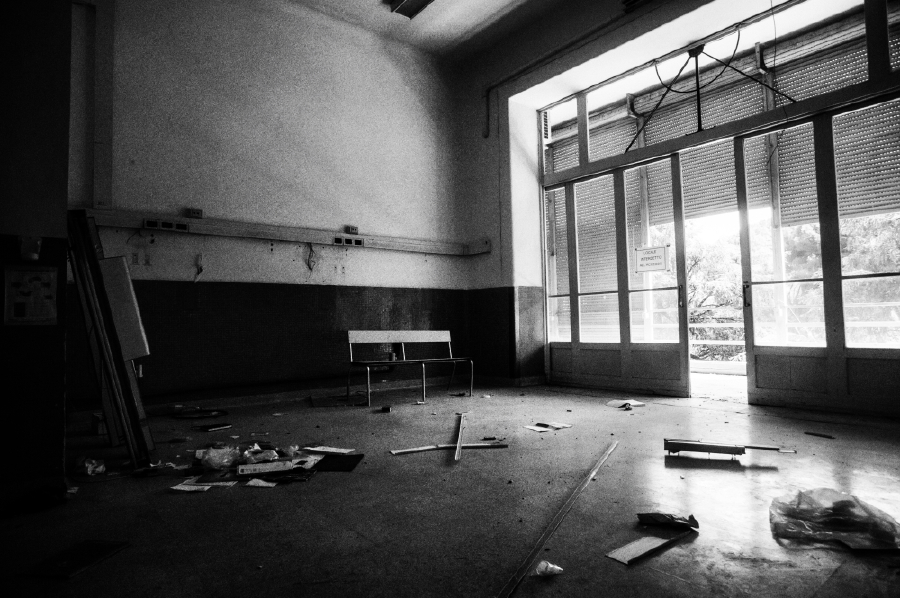On June 30, 2015, after more than 80 years of service and 10 of slow dismantling and abandonment, the hospital Carlo Forlanini in Rome, opened by Mussolini in 1934, has finally closed its shutters. Named after the most famous Italian followers of professor Robert Koch, who in 1882 was able to isolate the bacillus of tuberculosis which, at that time in a city like Rome, stroked and often killed one in five, the hospital was designed, built and organized according to pioneering criteria for that time. It was at the heart of a park of 280 thousand square meters with thousands of tall trees. Before the discovery of TB drugs with bacteriostatic and bactericidal action, tuberculosis was treated with rest in hygienic and well ventilated environment, as well as surgery. Sanitary characteristics of the sanatorium were dictated by Professor Eugenio Morelli, Carlo Forlanini’s pupil. Few know that, underneath the hospital, into the cave used to extract the tufa stone to build part of the structure, there is an underground lake.
Today, after a glorious past, at night the hospital shows an unexpected face made of disquiet and despair. A spooky world populated by ghosts. Homeless, thugs, immigrants, drug dealers have lived in those rooms and abandoned lanes for years, between flooded floors, damaged doors, garbage, waste and broken glasses. Venturing into those places is like being suddenly into a Dantesque circle; where anything can happen even to be stabbed if you aren't paying attention. "I have lived here since 2008," said Daud, a Serbian occupant, "wherever there are people sleeping, even in the morgue" which in a macabre atmosphere has become even a sort of alcove for desperadoes. But wandering the rooms now empty, next to the dirt and decay, are so many objects that still remember the glorious past of this hospital: microscopes, wheelchairs, even valid medicines, medical records, machinery of all kinds are at disposal of those who, without any control, find refuge under the roof of what was once considered the centre of excellence for the treatment of tuberculosis.
professional category
URBAN GHOSTS (Series)
DESCRIPTION
AUTHOR
My name is Linda de' Nobili and I live and work in Rome.
I deal with social documentary photography to highlight the cultural and/or social features of places, communities and people I get in touch with.
I've improved myself with specialization courses at the Centro Sperimentale di Fotografia Adams and at the Scuola Permanente di Fotografia Graffiti in Rome.
To me photography is a necessity, a need and not a mere proof of concept. It's the desire to record and tell through pictures all aspects of reality. Sometimes the photography can be a means of examination and social outcry.
My photo features express the desire to write stories and life through pictures of the people I meet. The primary intention is to communicate that diversity is a specific resource to appraise with the contribution that everyone can give to community where he lives.
Stylistically, I often use the wide-angle lens, also for close-up, because my first desire is to create a "penetrating gaze" towards the main character of the story, his essence. The wide-angle lens loses his narrative meaning of description of contexts and permits an intimate style with an interior dialogue between a photographer and the portrayed subject.
Arsenale
I deal with social documentary photography to highlight the cultural and/or social features of places, communities and people I get in touch with.
I've improved myself with specialization courses at the Centro Sperimentale di Fotografia Adams and at the Scuola Permanente di Fotografia Graffiti in Rome.
To me photography is a necessity, a need and not a mere proof of concept. It's the desire to record and tell through pictures all aspects of reality. Sometimes the photography can be a means of examination and social outcry.
My photo features express the desire to write stories and life through pictures of the people I meet. The primary intention is to communicate that diversity is a specific resource to appraise with the contribution that everyone can give to community where he lives.
Stylistically, I often use the wide-angle lens, also for close-up, because my first desire is to create a "penetrating gaze" towards the main character of the story, his essence. The wide-angle lens loses his narrative meaning of description of contexts and permits an intimate style with an interior dialogue between a photographer and the portrayed subject.
Arsenale
back to gallery







